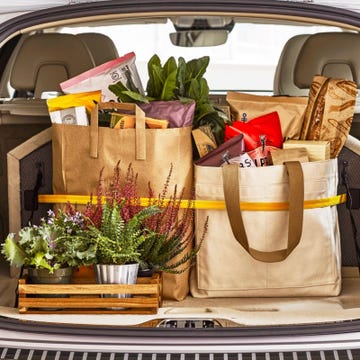1Decide on the ground rules.
 Getty Images
Getty ImagesWho fills the gas tank? Who has priority when everyone needs the car? Do all drivers contribute to maintenance and insurance costs? Are there penalties for getting a ticket, and who pays for them?
Knowing the answers (and consequences) can head off sticky situations and get younger drivers thinking about their obligations.
2Double check your insurance.
 Getty Images
Getty ImagesNot only do you want to make sure you have enough to cover the car if it's damaged, but if your family is sharing a single car, you may want to add rental car coverage for the time your car is out of service.
Advertisement - Continue Reading Below
3Create a text-free communication process.
 Getty Images
Getty ImagesSet up Bluetooth, Siri eyes-free or other hands-free communication in the car. And to locate a teen driver without calling to see where he is, invest in a service like hum by Verizon. For $10 a month (plus equipment, taxes and fees), the technology can identify your car's location, create speed alerts and even monitor its fuel economy.
4Consolidate everyone's calendars.
 Google Calendar
Google CalendarMake scheduling a regular family conversation so everyone's in the loop and no one's caught without a ride. Apps like Google Calendar and Cozi can help out too. Everyone can access it and get a notification when a new event is added.
Advertisement - Continue Reading Below
5Prevent and plan for emergencies.
 Getty Images
Getty ImagesForgot the last time you rotated your tires? No worries — hum's smart car system will send you a text when it's time, plus let you know when to change your oil and other maintenance reminders to keep car trouble at bay. (And if your engine light does come on, the hum app helps decode exactly what's happening.)
You still want to discuss how to handle emergencies like a flat tire or blown radiator that will take the car out of service. Get a roadside assistance plan — hum offers this service too — and make sure that all drivers know how to use it.
6"Crowdsource" cleaning and maintaining the car.
 Getty Images
Getty ImagesCreate a schedule for drivers to rotate car cleaning and maintenance, or designate a time when you'll clean it together. Charge each driver with providing cleaning supplies or completing a maintenance task when it's time.
Advertisement - Continue Reading Below
7Have an alternative-driver plan.
 Getty Images
Getty ImagesOpen a family Uber account or enlist nearby family members or friends for ride sharing so no one is left stranded or without transportation if plans change suddenly.
8Ensure all drivers know the current law.
 Getty Images
Getty ImagesSome driver's ed programs include a parent class, which is an easy way for adults who have been on the road for a long time to get up to speed on the new rules quickly. Find driver education information on your state's DMV site.
Advertisement - Continue Reading Below
9Trust but verify.
 Getty Images
Getty ImagesEven with ground rules, shared schedules and open communication, it's good to verify that the car is being used as intended. If you've set neighborhood boundaries for your teen driver, for instance, hum can help by sending you a text if the car leaves a designated geographical area.
Advertisement - Continue Reading Below
Advertisement - Continue Reading Below
Advertisement - Continue Reading Below























